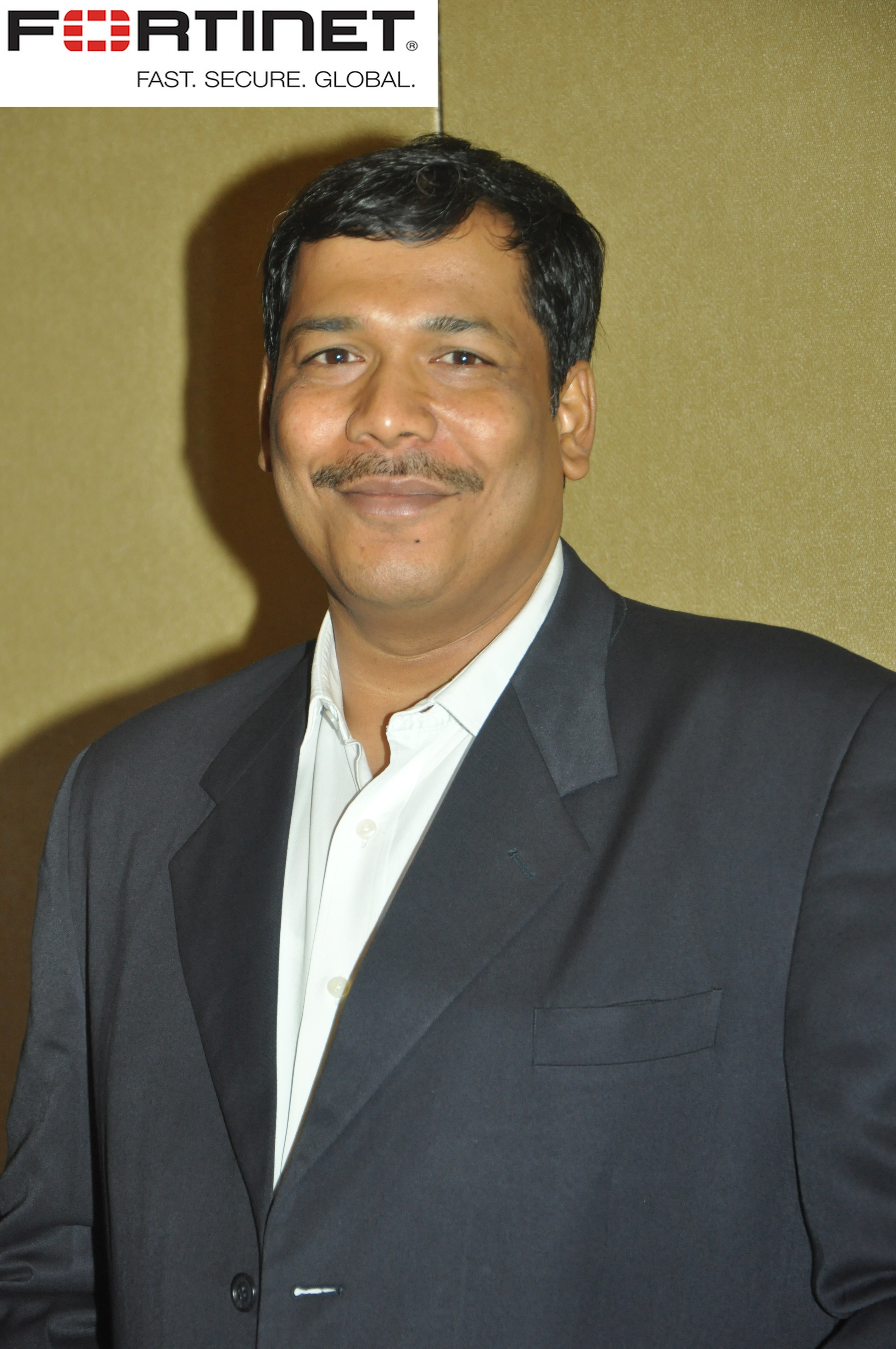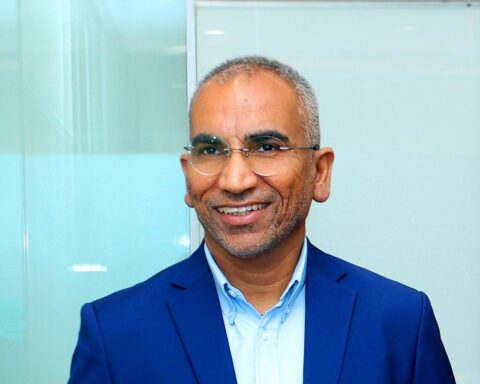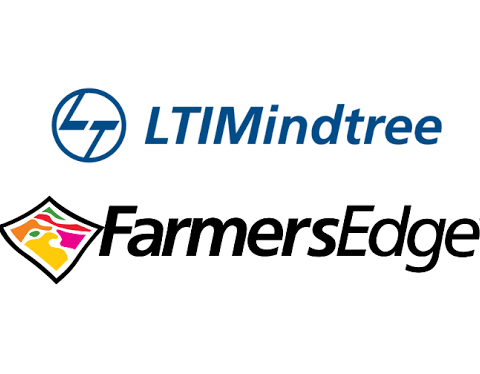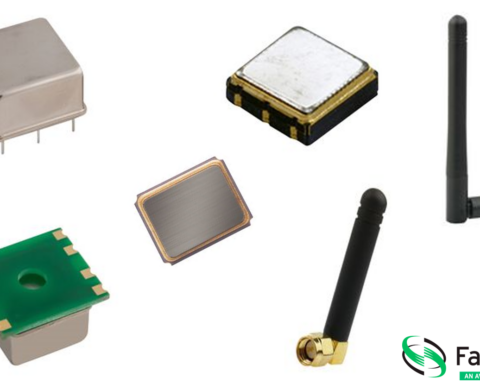In an exclusive interview with IT-Voice, Mr.Rajesh Maurya, Regional Vice President, India &SAARC, Fortinet, reveals his strategies for business in India.
Nisha Harshwal:- How do you plan to compete with other Information security-focused brands in India?
Mr.Rajesh Maurya:-The security point-solutions bolted onto networks over the years are simply no longer sufficient to address the new security challenges posed by the adoption of digital technologies and their attendant issues of elasticity, scalability, speed, and volume. Most importantly, that traditional approach doesn’t provide the proactive security platform organizations need to support the agility, automation, and orchestration they now require.
To meet these new demands, security must undergo the same degree of transformation that is impacting the network and even the business itself. This requires things like appropriate protections and inspections being automatically deployed at every data interaction point across all digital technologies; dynamic adaptability to secure networked environments that are constantly in a state of flux; the ability to see, share and correlate threat intelligence in order to detect and respond to threats in real-time; and the ability to impose constant threat assessments across the entire organization.
Fortinet’s unique Security Fabric approach enables organizations to tie traditionally isolated security solutions into a single, integrated system to automate security workflows, tighten SOC environments, correlate threat feeds, and seamlessly enforce consistent security across their distributed security infrastructure, including multi-cloud environments. And Fortinet’s new Fabric Connectors enable firms to seamlessly extend security deep into new environments with a single click as platforms, services, and applications are deployed.
Nisha Harshwal:- With competition increasing in this segment, service, in addition, will play an important role in maintaining the brand name of the company? Please comment.
Mr.Rajesh Maurya:-Fortinet together with its channel partners is committed to supporting its customers throughout the lifecycle of its security project. From business and technical consulting to professional services and product support, the company can tailor its offering to match any specific business requirement.
We also have Advanced Support which comprises a range of service packages all of which include fast-track, easy access to our Advanced Support team dedicated to this service, and improved SLAs for ticket handling.
At the highest level, there is a designated resource, a Lead Engineer (TAM), with whom the customer can build a trusted relationship and who over time becomes an extension of the customer’s technical team.
Fortinet Professional Services assigns experienced networking consultants to work closely with our customers to define how we can assist in providing expertise to every project. Our consultants can support a project through all its lifecycle phases: Architecture and Design; Implementation and Deployment; Transition and Migration.
Nisha Harshwal:-In your opinion how big is the market for NAC and IoT Security in India?
Mr.Rajesh Maurya:-The use of IoT devices is growing at a tremendous rate as organizations embrace digital transformation to enable better operational efficiency. According to NASSCOM, the IoT market in India is expected to reach $15 Billion by 2020. The sheer volume of devices—including IoT, corporate, and BYOD—seeking wired and wireless network access are exponentially enlarging the attack surface and raising internal provisioning, management, and compliance costs. The responsibility of connecting and securing access has shifted from a network-led issue to a security-led issue and poses a challenge for organizations: security managers need to secure every single device every single time, while cybercriminals only need one open port, one compromised or unknown device or one uncontained threat to circumvent all of the effort going into securing the network.
 Nisha Harshwal:-What are your biggest priorities for the DDos market in India?
Nisha Harshwal:-What are your biggest priorities for the DDos market in India?
Mr.Rajesh Maurya:-The latest approach to managing DDoS traffic involves utilizing the power of the Border Gateway Protocol (BGP). BGP is the routing protocol that glues the Internet together. For example, Internet Service Providers use BGP policies to govern traffic flowing across their networks. BGP lets BGP-participating routers know which networks are reachable via which Autonomous Systems.
FortiDDoS not only has full visibility of an attack, but being a high-performance appliance it can also detect attacks at layers 3, 4, and 7 within a few seconds. And due to its granular capability to identify attacks, it also uncovers detailed visibility into them.
Fortinet has set up a DDoS R&D center at Hyderabad that works very closely with our HQ at Sunnyvale, CA, USA. During the year 2017, the team contributed significantly in developing the high-performance hardware logic for FortiDDoS including a Domain Reputation Service. DNS servers are a favorite tool of attackers for DDoS strikes. Most large-scale DDoS events are innocently assisted by DNS servers as they amplify traffic by repeating and increasing the size of packets sent to DDoS attack targets. This logic is able to scale and block millions of malicious domain names at a line rate for very high-performance in-line devices used by the world’s leading service providers.
Fortinet is building its next-generation platform for FortiDDoS devices, the India team worked on doubling the performance and enhancing the feature-set.
Nisha Harshwal:- what are your upcoming technologies for India?
Mr.Rajesh Maurya:-Fortinet is committed to providing businesses and organizations with the security capabilities needed to combat modern cyberthreats while allowing for efficient digital transformation efforts. Our solutions bring a comprehensive array of next-generation capabilities to secure customers networks.
Fortinet’s SD-WAN solutions are the first in the market to provide complete integrated security by replacing disparate WAN routers and security devices with a single integrated solution that can support and secure remote sites and users. For customers, this unique approach provides exceptional cybersecurity while allowing them to deploy increased bandwidth applications, securely share cloud-based data, and automatically adapt to the evolving threat landscape—capabilities critical to successful digital transformation efforts.
Another key area is Digital Transformation that brings a proliferation of unsecured IoT devices accessing the network, and with it, the increased risk of a security breach. Fortinet recently launched FortiNAC Network Access Control Solution for IoT Security. FortiNAC allows organizations to identify every single device on the network and enables segmentation, giving each device access only to approved items. This functionality is delivered all within a solution that works with multi-vendor environments and an unlimited number of devices. FortiNAC strengthens the Fortinet Security Fabric for IoT deployments, delivering broad, integrated, and automated cybersecurity solutions across the entire attack surface. In the world of IoT, FortiNAC answers the question ‘what’s on your network’ and then enables you to protect it.
Nisha Harshwal:-give us some view on the crossing Innovation milestone of Over 500 issued patents?
Mr.Rajesh Maurya:-From its beginnings, Fortinet’s goal has been to deliver broad, truly integrated, high-performance security across the IT infrastructure. To meet that goal, Fortinet has grown up with and encouraged a culture of innovation – it is truly built into the company’s DNA. But what sets Fortinet apart is not simply our ability to create innovative security solutions. It is our vision and ability to accurately predict what solutions will be needed to protect the network of the future and keep increasingly sophisticated attacks at bay.
But it’s not just the large number of patents awarded that is so impressive. It’s also the breadth of technologies covered by these patent filings, including Automation and artificial intelligence (AI), Cloud-based security policy configuration, Cloud-based logging service, Securing the Internet of Things (IoT), Security analytics, Email and web security, Security information and event management (SIEM), Sandboxing protection for endpoints and much more. Each patent represents a new and useful invention in cybersecurity, which reflects not only Fortinet’s innovation leadership but also its technology vision.
Many of Fortinet’s innovations have been informed by direct customer feedback and incorporate features that directly address challenges faced by Fortinet customers. Fortinet takes its commitment to innovation a step further and consistently participates in independent testing and validation to ensure its patented technologies perform well in real-life environments.








